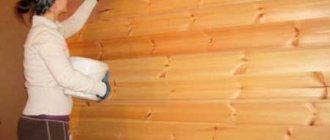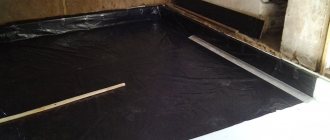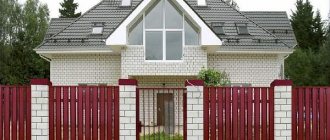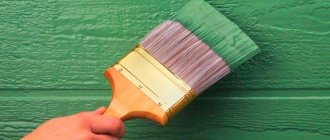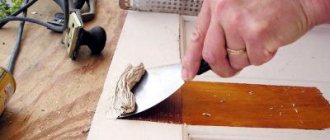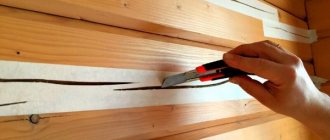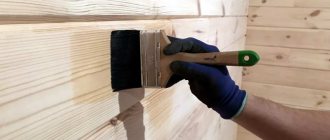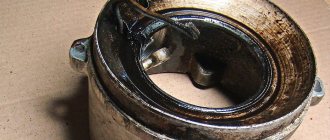A fence is a fence designed to protect the site and the owners from uninvited guests - people, animals, as well as from wind, noise, dust and prying eyes. Despite the practicality and unpretentiousness of corrugated board fencing, more and more homeowners prefer to enclose their property with wooden fences.
This is explained by the fact that now the trend is “eco-style”, which is as close as possible to nature and allows the use of natural materials - wood, natural stone, etc. In addition, wooden fences have a unique beauty - with age, the material changes - in shade, structure, allowing you to revive and decorate the area with its appearance.
Another advantage of a wooden fence is that it does not heat up from the sun and in the immediate vicinity of it you can plant shrubs, flowers, trees - they will not “burn out”. However, leaving untreated wood is fraught with risks - it will quickly turn gray, rot, and dry out. To extend the life of a wooden fence, it must be treated.
The modern chemical industry produces a lot of products that can extend not only the life of the fence, but also make it invulnerable to moisture, fire, and fungus. What should you protect wood from? First of all, from moisture and fungi. These reasons can lead not only to damage to the appearance of the fence, but also to partial or even complete replacement of fencing elements.
The following materials can be used for processing:
- Antiseptics;
- Primers;
- Lucky;
- Paints and enamels;
- Impregnation with refractory compounds.
What external factors pose a danger to wood?
A wooden fence belongs to the risk group due to external influences. It is in the zone of influence of several very powerful factors:
rain and atmospheric moisture solar ultraviolet biological hazard temperature changes
All these factors are usually considered separately, but are almost always present in combination. The main danger is moisture. Wood tends to absorb and release it, which causes warping and cracking processes.
Sergey
builder
It is high humidity that promotes the development of fungal infections and the spread of microflora colonies. Therefore, contact with water (in any form) should be considered among the main harmful factors. If they are excluded, almost all other problems lose their severity and can be solved with ordinary decorative finishing.
— Sergey builder
The fence is so different!
The fence can be new or old, made from treated or planed boards. The fence from the facade needs to be treated with a “beautiful” antiseptic, and on the fence of the garden you can use folk remedies. It is advisable to treat those parts of a wooden fence that only serve as protection from ill-wishers (at a dacha where you rarely visit) in such a way that it would be scary to touch.
Parts of the fence are also in different conditions: the posts are in contact with the ground, the boards are vertical, and the veins are horizontal, and water does not drain from them. For a fence on the sunny side, it is advisable to use non-fading paint, but in the shade under trees it is not necessary.
Taking into account all these requirements, it is better to choose several antiseptics and impregnations, different in composition and cost. Why pay extra?
Types of biological lesions
When wood is damaged, different types of microflora can be detected - Stereum, Fomes, Daedalea, Lenzites, Polyporus, etc. Knowing the Latin names of different types of fungus does not provide useful information. In practice, they are guided by other signs. It is customary to distinguish:
white rot
Makes the wood wet, loose, and separates it into individual cellulose fibers. Outwardly expressed in the appearance of gray, yellow and white stains and spots
brown rot
Makes wood brittle, dry, prone to chipping and crumbling
soft rot
The most common consequence of high humidity. The wood darkens and becomes soft; with severe damage, the material completely loses its mechanical strength.
Compositions for treating the underground part of pillars
There are many folk methods on how and with what to treat fence posts.
Here are a few of them:
- Coating with birch tar or spruce resin (the oldest and most proven method).
- Treatment with used automobile oil (the cheapest method). The oil is applied in several layers in a heated state, thoroughly saturating all ends and cracks. 90% of the waste composition is mineral oil - a good water-repellent antiseptic. The acid salts contained in the waste kill any fungus in the wood.
- Firing and processing with bitumen. The part of the log that will be buried in the ground can be burned either over a fire or with a gas burner, creating a charred layer of several millimeters. The burned part is treated with molten tar or bitumen.
The protective layer is applied in two steps, so that each layer of bitumen impregnation can harden; it is necessary to withstand the drying period of the first layer for about a day. Bituminous impregnation is correspondingly black in color, so treat only that part of the wooden fence post that will be hidden in the ground.
It is not recommended to apply bitumen impregnation to wooden poles during fog or rain.
The construction market also offers all kinds of synthetic waterproofing compounds - mastics, pastes, etc. For example, bitumen mixtures Biom-2 or “Izhora”, several layers of which, in combination with fiberglass mesh and protective film, create excellent waterproofing with high protective properties, designed for 10-15 years of operation. Moreover, a 15-kilogram bucket of such a mixture costs only 450 rubles.
Neomid 430 eco is a preservative, non-washable antiseptic for external use, which provides maximum protection for wood during prolonged contact with soil and moisture. Protects against damage by wood-destroying and wood-staining molds, algae, mosses, and wood-boring insects for up to 35 years.
Signs of negative effects on wood
If there is no finishing coating, the wood acquires characteristic signs of traces of external influence. There are quite a few of them, and they usually appear all together:
- the surface of the wooden parts darkens;
- cracks appear;
- Linear dimensions change, the geometric shape of parts is often disrupted;
- areas affected by mold and mildew appear;
- the wood rots, loses mechanical strength and attractive appearance.
All these signs are clearly visible to the naked eye, and usually a few months are enough for them to appear.
If the fence is used in difficult conditions, negative consequences may appear earlier.
At the same time, in this case, difficult conditions should be considered:
Sergey
builder
The first two factors are most favorable for the growth of microflora - mold and mildew, putrefactive bacteria. The sun's rays themselves have a negative effect on wood, but in relation to microbiological factors they have a healing effect. At the same time, both conventional paintwork materials and specialized compositions can become means of protection against the influence of all factors.
— Sergey builder
What to choose for painting
If you want your fence to retain its original natural appearance, treat it with varnish. Some experts suggest using enamel for coating. It creates a durable film that protects the surface, but is not resistant to sunlight and temperature changes. In addition, it needs to be renewed every year, and the enamel itself destroys the structure of the wood and requires stripping before re-processing.
If you want the wooden fence to have a bright color different from natural, choose paint for coating. The following façade compositions are suitable for painting fences:
- Oil paints take a long time to dry, saturate wood well, and last for many years. But they have one significant drawback - poor resistance to low temperatures.
- Alkyd materials are more resistant to external influences.
- There is also a separate type of fireproof impregnation. If you want to play it safe and protect yourself from fire, carefully select the material for impregnation.
Painting the fence should not be done on a bright sunny or hot day.
The paint must saturate the wood well to create a protective layer that will protect the fence from harmful environmental influences.
It is better to apply several layers. After applying the first layer, at least 24 hours must pass so that the paint has time to be absorbed.
Wood processing materials
There are different materials that protect wood from external destructive factors. They are usually divided into three groups:
antiseptics
These are compounds designed to protect against biological threats of all types.
flame retardants
These are fire retardant compounds that reduce the ability of wood to burn
Particular preference is given to compositions of combined action (they are called biopyrenes). They contain components that prevent biological damage and ensure the fire safety of the material. They help save a considerable amount of time, reducing the number of processing procedures by 2 times.
Considering that most compositions must be applied in at least 2 layers, this option seems much more preferable. From the point of view of efficiency, they are somewhat weaker than individual compounds, but from the point of view of ease of use, they are much more practical.
There is another group of materials that are usually classified as folk protective agents. This is a conditional name, since this category contains chemicals that were not known in ancient times. But the name stuck and is used to designate the category of non-specialized protective equipment.
The principle of action of the compositions can be based on different methods:
creating conditions that are impossible for the existence of microflora (or insect activity). As a rule, these are salt solutions applied by surface methods
clogging of wood pores, ensuring complete moisture resistance. Under such conditions, no biological factors can act. Oil compositions are used as such impregnations.
combined materials that combine action in both directions for greater protection efficiency. As a rule, these are water emulsions
It is generally accepted that oil impregnations are more effective. When cracks or deep potholes appear, lesions appear where there is no protection. Therefore, combined formulations are more effective and are in high demand.
Types of impregnations for wood against moisture and rotting
Wood is the most popular material used in construction and decoration. Not a single structure is complete without the use of wood: it is always present in one quantity or another. In order for a wooden structure to last as long as possible without losing its original appearance, it is necessary to use protective agents to treat wood against factors that destroy it: moisture, insects, fungal infections. Wooden fences are constantly exposed to precipitation, temperature changes, and moisture; the lower part of the fence is destroyed especially quickly. To make the structure durable, you need to use special impregnations for wood against moisture and rot.
Popular antiseptics
Let's consider several antiseptics intended for treating wooden structures used in outdoor conditions:
Tikkurila Eko Wood
This is a glazing composition made by Finnish manufacturers. Provides deep impregnation and increases moisture resistance. Available in 40 color options
Luxens
Products of the Leroy Merlin company. Available in transparent and colored versions. Coating service life (maximum) - 4 years
Pinotex Ultra
Composition manufactured by the Dutch company AkzoNobel. Provides deep impregnation with ultraviolet filters. The surface of the wood becomes water-repellent and resistant to dust and dirt. The disadvantage is that the composition takes a long time to dry.
Nortex-Disinfector
Products from domestic manufacturers. Durability of protection - 5 years. The composition is colored pink to allow control over the uniformity of application. Can be applied even to damp wood, although this significantly increases material consumption
Dufa Wood Protect
German antiseptic for wood, recognized as one of the best compounds. Creates a noble matte sheen of the surface, has low consumption (1 liter is enough to treat 10 m2).
Examples of only the most popular antiseptics are given. In the assortment of specialized stores there is a huge variety of compounds that can reliably protect a wooden fence from external threats.
Conclusions and useful video on the topic
Recipe for preparing wood impregnation:
Detailed instructions for making impregnation for fire-bioprotection at home are in the following video:
Wood has always been in demand and people have invented various ways to protect it from pests and minimize the harmful effects of precipitation, high and low temperatures. You can use both purchased products and make your own using natural ingredients, most of which are available on the farm.
What antiseptic do you use? Share your recipe for the perfect impregnation, which is easy to prepare yourself - the comment form is located below. If you have questions about wood preservatives or application nuances, ask our experts and other site visitors.
Folk remedies
Among the folk (more correctly, improvised) remedies are usually included:
- a solution of soda and vinegar;
- copper sulfate solution;
- impregnation with used machine oil;
- a mixture of salt, boric acid and water;
- a mixture of sulfuric acid and potassium dichromate.
A solution of copper sulfate has a pronounced antiseptic effect. It is capable of not only providing preventive treatment, but also healing some of the affected parts. The remaining options are less effective than industrial drugs and are used only as an alternative.
Criterias of choice
When choosing a suitable composition, you should pay attention to the following qualities:
versatility
It is always recommended to prefer a composition with the maximum range of functionality - antiseptic + fire retardant, in order to solve all protection issues in one treatment
life time
As a rule, the antiseptic retains its working properties for 3-5 years. If a manufacturer promises durability of 20-40 years, most likely this is a common marketing ploy
consumption
The average is 200-250 g/m2. Sometimes there are too large numbers that should alert the buyer. This indicator is also influenced by the method of applying the composition.
brand
This does not directly make the composition better, but it allows us to hope for a careful and responsible approach to production conditions; you can rely on reviews of the manufacturer
price
The price of the composition should not be comparable to the cost of the structure itself; the assortment presented in the shopping center allows you to choose a product that suits the consumer’s pocket
In addition, the method of application and type of composition should be taken into account. Experienced users prefer oil-based materials - such impregnation provides deeper processing and significantly increases the moisture resistance of wood.
Columns
Posts are an important element in the design of a wooden fence, so you should carefully select and process them. Choose dried timber without bark: pests can live under it. And if bark is present, the beams must be thoroughly cleaned of it and treated with a septic tank to remove insects.
The humidity of the material should not be higher than 15%. Only in this case will the result of impregnation be durable and effective. Pay attention to whether there are delaminations or mold on the posts. Even if you remove the mold and treat it with a special solution, the pole will rot.
Solutions for columns
When processing pillars, special attention must be paid to the lower part, which is in contact with the ground. It is this part of the timber that is most at risk, because it retains high humidity, which is a favorable environment for the proliferation of pests and rot. Over time, pests move throughout the post and destroy it.
Bitumen-based solutions are well suited for treating the underground part. A tree that has withstood impregnation for 1-2 days in a solution of 5-7% vitriol does not rot for about 15-20 years. Impregnation should not be carried out in foggy or rainy weather. The top of the post should be treated with varnish with an ultraviolet absorber. The varnish must be colored. A post treated with this varnish is not affected by weather conditions: rain, sun, wind. Often fence posts are painted with an oil or alkyd composition, but you need to remember that in this case the paint will hide the structure of the wood.
Processing a wooden fence
Fence processing is a procedure that can be performed in different ways:
applying compounds using brushes or rollers
air or airless spraying
immersing fence parts in a bath of solution
Sergey
builder
The simplest and most popular method is manual application using brushes (rollers). This method is accessible to everyone and does not require the use of specialized equipment.
Spraying is done with less physical effort, but the consumption of the composition increases significantly, and not all users have the necessary equipment.
The bath immersion method is a convenient and very productive processing option. But it needs to be planned at the design stage. In addition, when the impregnation expires, it will not be possible to repeat the procedure; you will have to choose manual application or spraying.
— Sergey builder
Fire protection
Does a fence always require fire protection? Most likely, only those areas that are located next to buildings are treated with fire retardants. They usually also contain an antiseptic. Some fire retardants penetrate deep into the wood and require impregnation in baths. In everyday life, those that create a protective film on the surface and are applied with a spray or brush are used. Such a film on a wooden fence that is exposed to adverse effects will not last long.
When working with antiseptics, tar and oil, follow safety precautions, work in a respirator and gloves. Remember, paints and varnishes are fire hazards.
